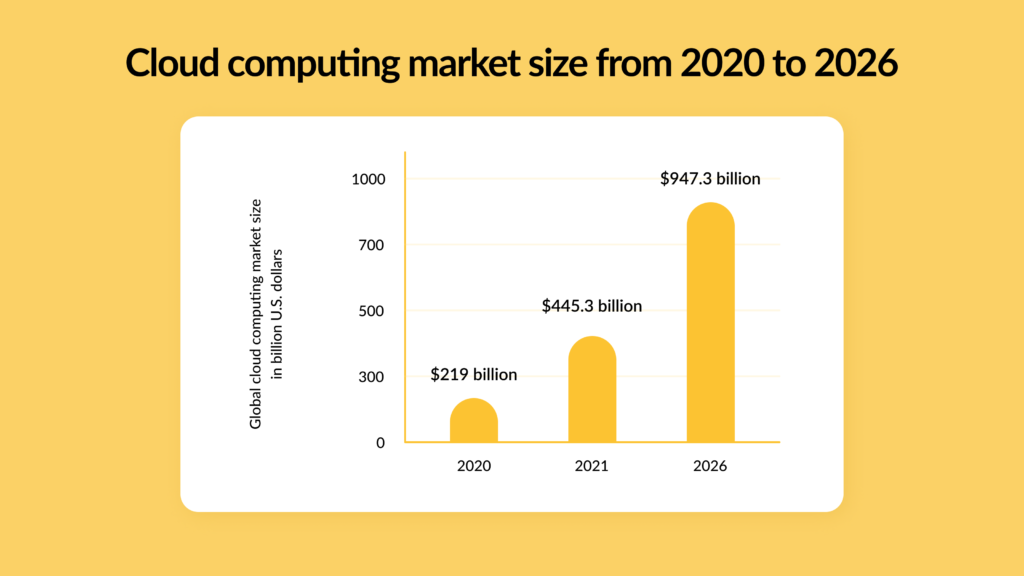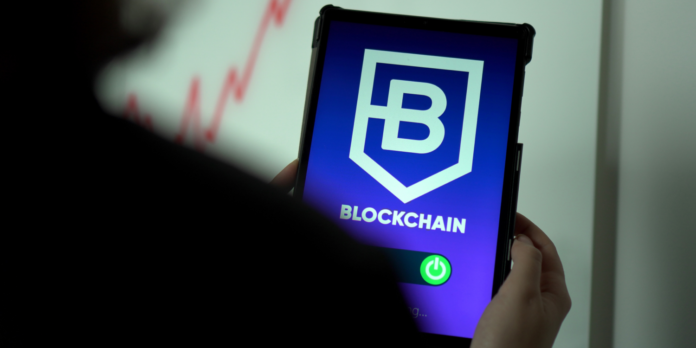Blockchain technology is widely used in cloud computing and the crypto business. As a result, companies have a unique opportunity to increase their capabilities and provide clients with more high-quality services by utilizing Blockchain in conjunction with robust cloud technology.
This piece should be read by every company owner who wants to benefit significantly from modern technology. Learn more about how blockchain technology and clouds interact straight away, find their common advantages, and learn how to utilize them effectively in your company.
The Use of Blockchain Technology in Interaction with Clouds
Let’s start by exploring tech terms definitions in more detail.
The well-known Blockchain innovation isn’t just a buzzword but a cutting-edge distributed ledger first used for commercial activity with Bitcoin crypto. P2P network architecture is utilized during its creation, freeing transaction data from control by a single centralized system. All Blockchain users have simultaneous access to this data. Additionally, Blockchain offers a chance to eliminate fraud, improves the transparency of every transaction, and assures the resilience of the data nodes.
Clouds and Blockchain: A Comparison
When looking for an improved management system, businesses are paying attention to the conjunction of Blockchain and cloud services. So, we’ll discuss more clouds and the prospect of Blockchain and cloud connection.
The cloud refers to cyberspace, where users may access diverse data in real-time. The Blockchain is another technology that works with data, encrypting and hashing the information to keep it in safe databases. But it’s obvious that the cloud system cannot provide complete data security against hacker intrusion or modification of sensitive information.
A common location for the storage of cloud data is the company’s centralized network of data centers. Contrarily, the Blockchain is based on the concept of decentralization, which implies that all the data is stored among several nodes rather than just one.
The Common Benefits of The Blockchain Technology Use in Business
Blockchain innovation has the opportunity to boost cloud services by making them more decentralized, secret, and secure. Combining these two technologies together will thus only be advantageous for business owners. Let’s look at how it works and the precise benefits that may be obtained.
Visibility enhancement
Blockchain requires the creation of a decentralized paradigm of trust in order to increase the transparency of data processing. The Blockchain network should also improve activity visibility while reducing data tampering. A third party cannot alter data that has been stored in a sequence of blocks, in addition.
Making traceability easier is important
Any computer on a blockchain network may access records without affecting the data stored on other network devices. As a result, the information’s correctness and integrity are guaranteed. In a Blockchain network, any data inputted is stored there permanently as well. As a consequence, monitoring who is utilizing the data when and how is easy.
Enhanced security and safety measures
Information security is one of the main issues with cloud computing. More than 60% of study participants identified data leakage as their top security worry when it comes to cloud computing. Blockchain technology, which improves database security and data account encryption, provides a solution to this issue.
What Enhances the Popularity of Blockchain in Conjunction With Cloud Computing?
Why is the combination of blockchain and cloud so enticing to business owners? Blockchain expands the possible uses of cloud computing in corporate settings by creating an endless number of new options. It’s time to give the variables influencing the adoption of Blockchain in cloud computing significant thought.
 The popularity of tech implementation in numbers
The popularity of tech implementation in numbers
Decentralization is the processing and storage of data without a link to a centralized server. Data files that have been encrypted are divided up and kept at several nodes, maybe scattered all over the world. As a result, a node’s speed could not be relevant until an update check is necessary.
Point-to-point encryption allows for the protection of data during transit as well as after it has been received. Blockchains for transactions are a reliable way to keep track of transactions and their sequence across time. The third level of security is added by strong P2P dissemination of accurate blockchain copies through a cloud computing infrastructure.
Due to easier disaster recovery, failures in some network nodes won’t affect other blockchain versions. Using the transactional history of the blockchain traces, any network node experiencing a problem may instantly obtain the current blockchain database state when the node comes back up (particularly if they have a specific duration).
Which business sectors employ the said technology the most frequently? What do they get after this use? We’ll go into great depth here.
 Blockchain cases of use
Blockchain cases of use
Real estate domain. Eliminating necessity in brokers and enhancing due diligence before buying or selling a property. Moreover, transaction data processing is safe and simple using Blockchain smart contract.
Healthcare Blockchain adoption helps medical establishment managers protect data by avoiding leakages and tampering with sensitive information.
Logistics managers use Blockchain-cloud interaction to increase the company’s profits as well as enhance interoperability, track product transportation, and increase transparency.
Banking issues as to international payments speed and high money transferring security can be immediately solved by Blockchain adoption.
Related Posts:
- A Closer Look At The Top Ten Metaverse Crypto Projects
- What is Blockchain Marketing
- How Blockchain is Being Used in Various Sectors of Our Life?
- Top 10 Blockchain Platforms You Need To Know About
How You Can Apply to Blockchain-Cloud Interaction To Your Daily Workflow
Let’s carefully examine the integration procedure after taking into account all the benefits of blockchain technology in cloud computing.
Step 1. Business goals and perspectives identification
The intended goals could vary. Let’s say you may need to strengthen the effectiveness of tracking goods and services or to raise the degree of data security. Then, create a range of criteria to meet your demands and realize the specified aims.
Step 2. Determine the information volume
To gather comprehensive data that will help with the achievement of certain business objectives, massive info loads must be organized in a proper manner. To achieve this, the database must be emptied from superfluous and useless information and should only include actual and useful resources.
Step 3. Select a cloud deployment strategy
When adopting blockchain, you should pick the appropriate cloud model: public, private, or hybrid.
Step 4. Architecture for cloud solutions to use
Before putting blockchain solutions into practice, you must take into account your architectural alternatives. Today’s experts advise focusing on microservice-based modern architecture. Since outdated systems are frequently monolithic, any upgrades necessitate system reconfiguration.
Step 5. Look for a trustworthy IT provider to cooperate
In order to integrate blockchain technology with cloud computing, you must first choose an experienced IT provider. You have three basic recruiting options: select an internal team, engage freelancers, or submit an application to an outsourcing company.
Step 6. Launch
It’s time to construct bespoke blockchain solutions suited to the requirements of your particular organization with the help of properly chosen tools. Several cloud service providers now provide blockchain clouds to help businesses with their complex project demands.
Step 7. Maintaining and supporting operations
The interconnected systems may require various degrees of technical support in addition to upkeep procedures. This stage includes things like making improvements to the performance of developed solutions, conducting code optimization, as well as version updates, the inclusion of new features, etc.
Summing Up
A skilled IT provider must be involved in the challenging process of Blockchain-based cloud integration in digital business goods. You can speak with the vendor’s experts about the difficulties involved in realizing this difficult integration. They may also offer you reliable tech solutions to your problems, offering the most helpful and profitable way of innovative implementations into your regular company operations. So that you will be able to fully benefit from the most recent technological advancements.






















